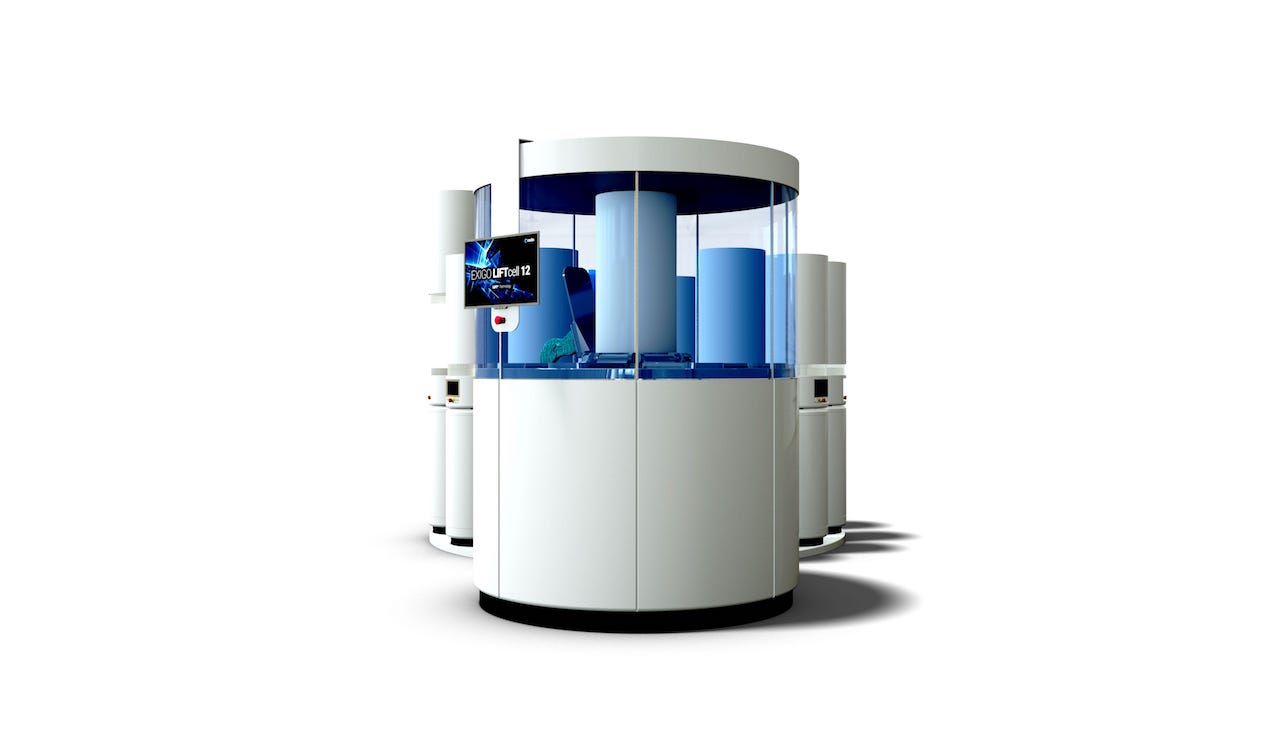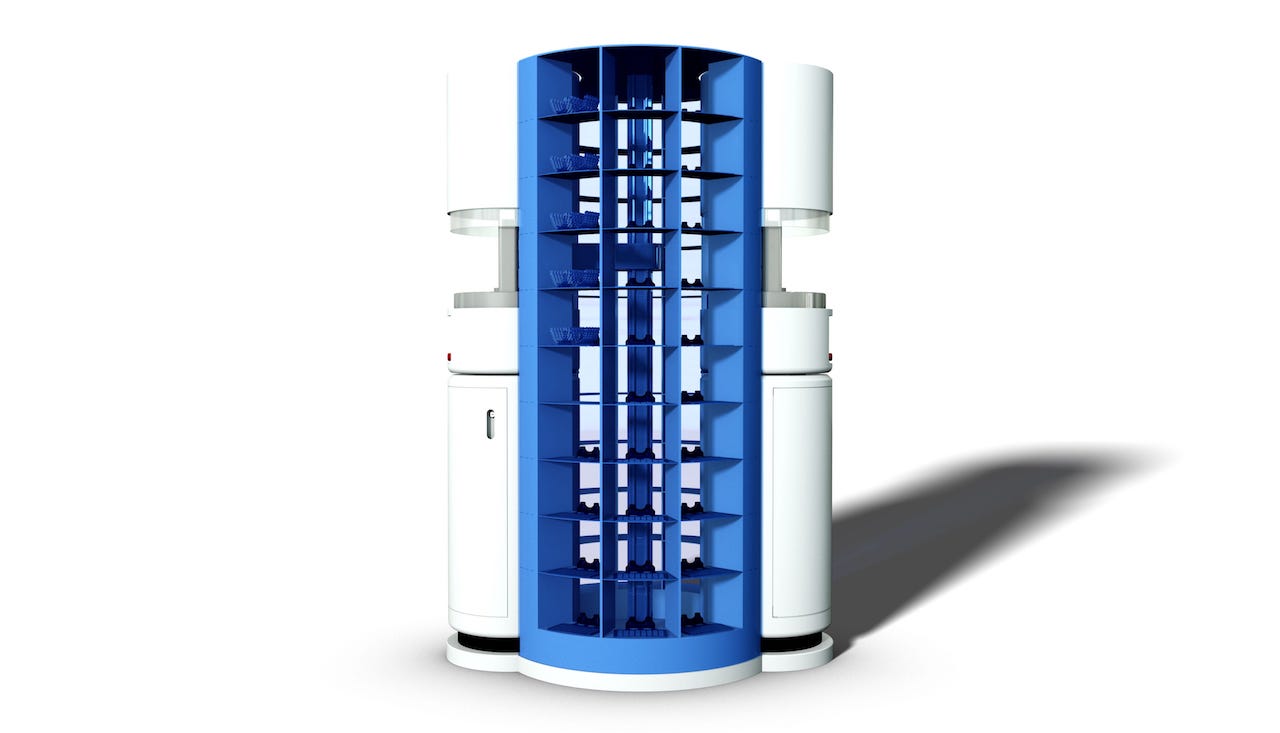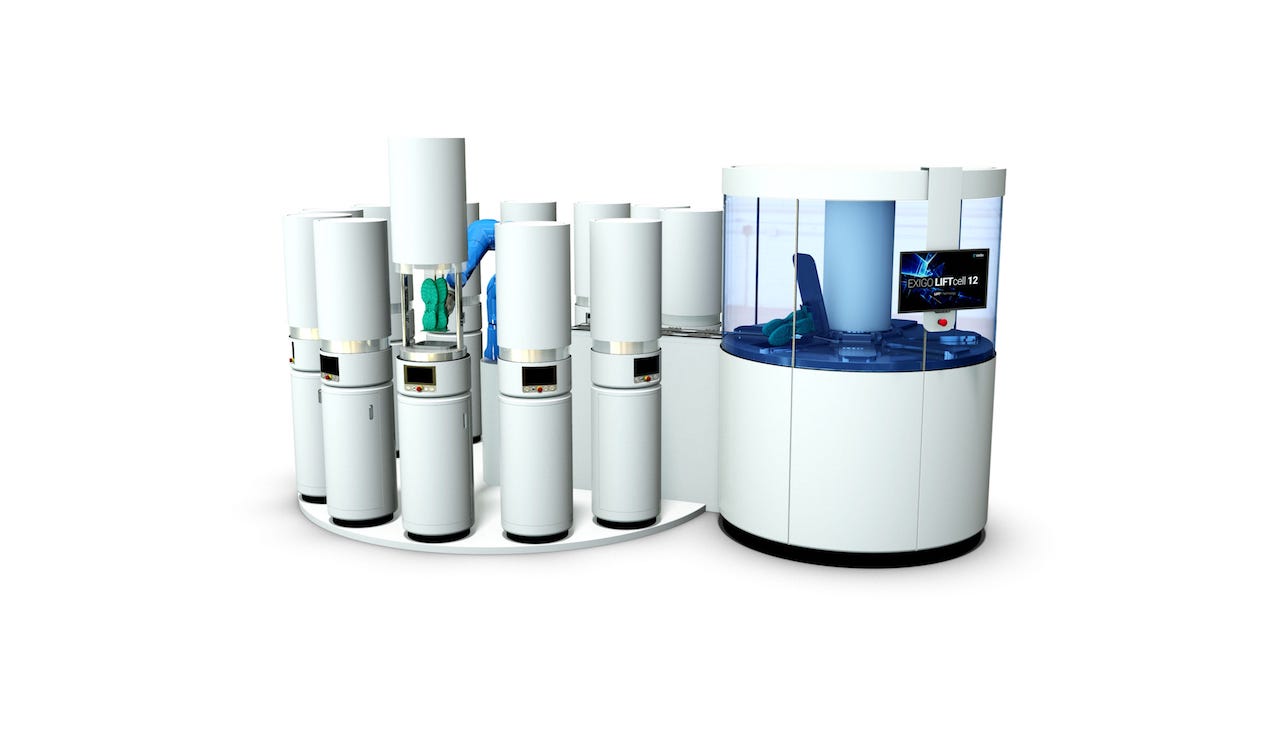
Coobx has announced a fascinating new 3D printer accessory, the LIFTcell, which provides a significant amount of automation.
We wrote about Coobx’s unusual resin-based 3D printer some weeks ago, where their top-down resin process was examined. Now they’ve announced an accessory device known as the LIFTcell that comes in several configurations that provide a number of pre- and post- printing automation features.
The act of 3D printing itself is an automatic process: the printer prints. But it’s what comes before and after that which is at issue. Manual labor is required to load, unload and post-process prints on almost every machine. I believe this is one of the greatest barriers to the adoption of 3D printing by manufacturing, which has moved to automate as much as possible. You can’t do that by introducing a new element that requires significant manual intervention.
And it’s even worse when the printer is fast, like Coobx’s EXIGO 3D printer. You’ll need to perform that manual intervention more frequently to unload the print, reset the printer for the next job, top up the resin, clean and cure the print. Now imagine doing that with an array of 3D printers, each finishing a print in 30 minutes. You might even require more than one human operator to handle all the changes.
Coobx’s new LIFTcell addresses this by literally performing all the required operations by itself.

The LIFTcell is essentially a robotic library / post processor containing capacity for up to 60 build trays attached to between 1 and 12 Coobx EXIGO 3D printers.
In the most basic configuration, the LIFTcell 2 attaches to one or two printers. A robotic arm in the center moves build trays between the racks and the printers as jobs start and end. The completed prints are cleaned and cured with additional UV light exposure within the system.
Most interesting to me is that the printers are connected to a hose-fed supply of resin so they can run more or less continuously. The system can supply two different resins, one to each of the printers, if required. Coobx says the machine can run for up to 15 hours on its own, meaning it’s ideal for overnight work. This is a way to make a machine (or two) that completes a print every 30 minutes be able to work overnight without having to hire labor to supervise it. However, there is some work required as Coobx says the LIFTcell 2 is “semi-manual”, but it’s not clear what this means.
Meanwhile, they also offer two much larger configurations, the LIFTcell 8 and 12. The “8 and 12” refer to the number of machines capable on each configuration: between 4-8 and 8-12, respectively. This allows you to build a powerful array of automated 3D printers that can run 24/7.

These higher level units provide four different finishing processes:
- Pulse Jet Precleaning (opt. resin recovery)
- Ultrasonic Fine Cleaning
- Wash & Dry
- Inert Gas UV Curing (opt. tempering unit)
The LIFTcell 12 can handle 240 build platforms, making it a formidable production machine.
I believe this to be a very important announcement in the 3D print world, as this type of automation is essentially not available on virtually every other piece of equipment. The only product that seems close to this is 3D Systems’ recently announced “Figure 4” device that also uses a robot to move build trays between processing stations.
I’m not sure which system is better designed, but the LIFTcell seems well thought out and very focused on a specific production process, whereas the Figure 4 system is more of a toolkit that can be assembled in different ways to match the manufacturing process need. On the other hand, many (including us) have seen the Figure 4 in action, whereas the Coobx system appears to be mostly renders of a design. I’d like to see this system in operation, and hopefully will do so at an upcoming trade show.
[UPDATE] We’ve been notified by Coobx that the first official public presentation of the LIFTcell system will take place at the TCTshow this September in Birmingham.
Regardless, it seems that at least two companies have now staked a claim in the mass 3D resin printing market, which should generate some new business models as entrepreneurs discover ways to leverage this powerful new capability.
Via Coobx

